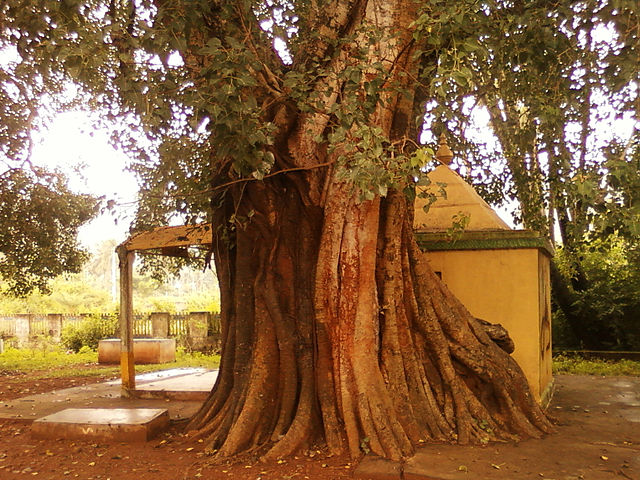The Peepal tree or ficus religiosa is a fig species native to the Indian subcontinent and Southeast Asia. It is considered sacred in various traditions and hence also called the “sacred fig”. You will always find these trees in famous temples, monasteries, and other places of religious and cultural importance. Let’s learn some interesting facts about the Peepal tree.

- Peepal trees can reach a height of 30 m. However, they are generally known for their canopy area. The trunk size varies greatly but is generally 1-3 m wide.
- Peepal trees live a long life. Some famous Peepal trees are hundreds of years old. Some rare ones are more than a thousand years old.

- The Jaya Shri Maha Bodhi tree in Anuradhapura, Srilanka is the oldest known peepal tree. It was planted in the third century BCE from a branch of the Maha Bodhi tree in Bodh Gaya, Bihar, India under which Gautama Buddha attained enlightenment.
- In Ayurveda, Peepal along with Neem and Banyan trees holds a lot of importance. It is used in the treatment of Asthma and various stomach and tooth-related problems.
Disclaimer: Any medicine should be taken as prescribed by the physician. - Peepal trees are known to provide high levels of oxygen.
- The leaves of the Peepal trees have a long apex tail giving them a distinguishable appearance. However, still, the Peepal tree is confused with the Banyan tree a lot.

- Peepal trees can tolerate a wide range of temperatures and can grow in a variety of soils. This is the reason why they are highly invasive and quickly start growing in abandoned houses and ruins.
- In some cultures, growing Peepal at home is strictly avoided because of historic beliefs.
- In villages, especially in India, Peepal and Banyan trees are the points of gatherings and meetings.
- Naturally, peepal starts growing as a hemiepiphyte i.e. it grows on other trees sharing its nutrients and over time growing downwards and eventually reaching the soil. When the host tree dies, the peepal tree takes its place.
Read more